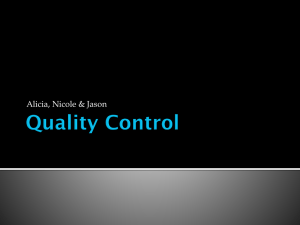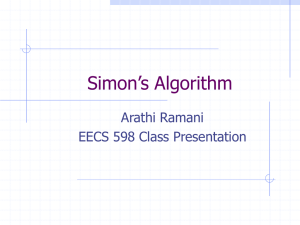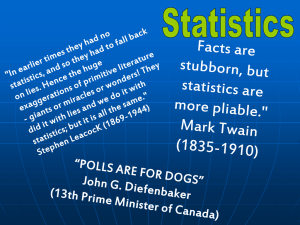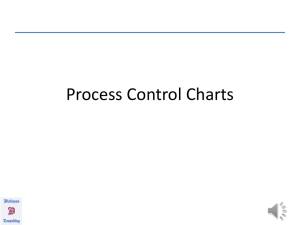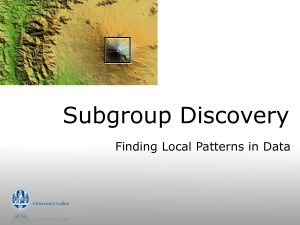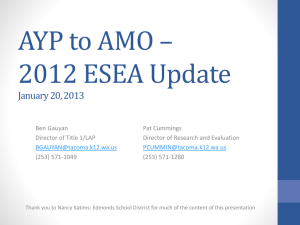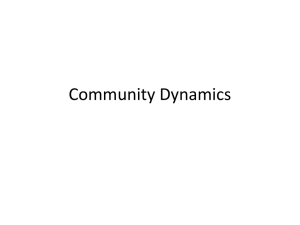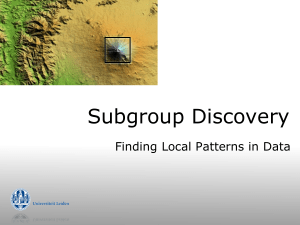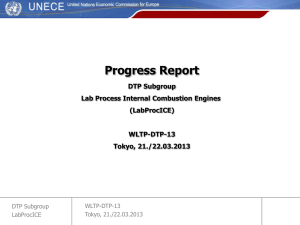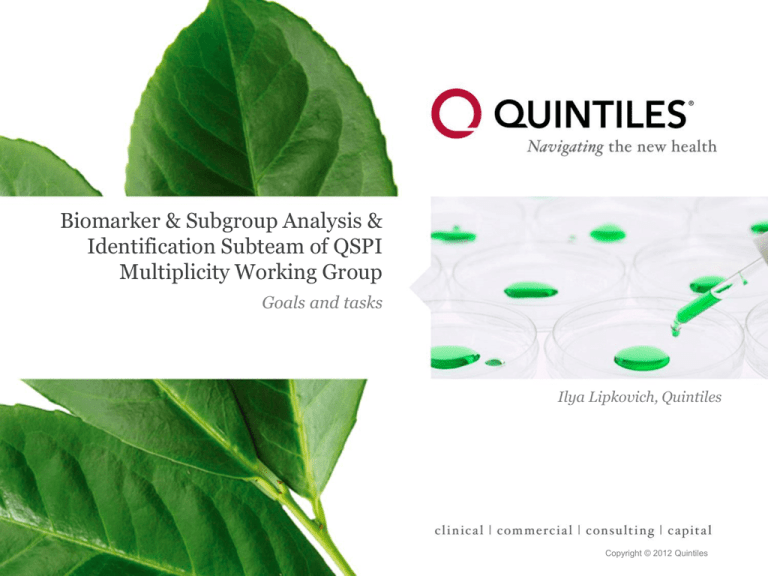
Biomarker & Subgroup Analysis &
Identification Subteam of QSPI
Multiplicity Working Group
Goals and tasks
Ilya Lipkovich, Quintiles
Copyright © 2012 Quintiles
General objectives
• Formed under multiplicity team of QSPI
• http://biopharmnet.com/wiki/QSPI_Subgroup_Analysis_Working_Group
> The subteam is planning to create a unifying and transparent framework for the
current state of subgroup analysis/identification methods and their application to
clinical and observational studies:
> Describing/developing common principles for confirmatory subgroup analysis versus
subgroup search/identification in pharmaceutical applications.
> Creating a systematic review of key published methodologies and available
algorithms for subgroup analysis/identification methods for data from randomized
clinical trials.
> Evaluating operating characteristics and relative advantages/disadvantages of
existing methods via simulation studies.
> Developing better validation/confirmation strategies for subgroup identification.
> Connecting subgroup identification methodologies used in randomized clinical trials
with those utilized in observational studies.
> Developing educational tools to facilitate application of subgroup analysis/subgroup
identification methods
2
Group members & affiliations
Current members:
Arunava Chakravartty (Novartis), Josh Chen (Merck), Ying
Ding (University of Pittsburgh), Alex Dmitrienko (Quintiles), Birol
Emir (Pfizer), Adarsh Goshi (Gilead), Zhou Kefei (Amgen), Yumi
Kubo (Amgen), Ilya Lipkovich (Quintiles), Lei Liu (Northwestern
University),Yufan Liu (Rutgers University), Cristiana Mayer (Johnson &
Johnson), Sandeep Menon (Pfizer), Padraic Neville (SAS
Institute), John O’Gorman (Biogen Idec), Gautier Paux (Servier), Tom
Parke (Tessella), Jane Qian (Abbvie), Lei Shen (Eli Lilly), Li
Wang (Abbvie), Lin Wang (Sanofi), Lei Xu (Biogen Idec), Stan
Young (National Institute of Statistical Sciences),Donghui
Zhang (Sanofi).
3
Goals Overview
#
Goal
Task
Responsible group
members/Lead
Deliverable
Timeline
G1
Common/existing practices for
Subgroup analysis (SA) in
pharmaceutical industry
(1) Quantitative review of SA/SI
features from SAP & protocols
(2) Qualitative review of main tasks
involving SA/SI
Cristiana (J &J), Ilya & Alex
(Quintiles) , Qian (Abbvie),
Yumi (Amgen)
Q4
G2
Creating systematic review of
the state of art
Key published methodologies and
available algorithms.
Arunava (Novartis), Josh
(Merck), Sandeep (Pfizer),
Ilya & Alex (Quintiles), Lin
Wang (Abbvie), Ying (Pitt)
Industry paper
Review paper on
existing subgroup
analysis
practices/method
ologies and
presentation of
survey results
G3
Evaluating operating
characteristics of existing
methods via simulation and case
studies.
(1) List of available software
implementations
(2) Common simulation scenarios
(3) Common criteria for comparison
Lei Shen (LEAD, Eli Lilly),
Birol (Pfizer),Ilya
(Quintiles), Lin Wang
(Sanofi), Adarsh Joshi
(Gilead), Tom Parke
(Tessella Ltd), Donghui
Zhang (Sanofi); Padraic
Neville (SAS), Zhou
Kefei (Amgen), Yufan
(Rutgers)
Improved tools
for data
generation/perfor
mance
evaluation,
Library of test
data sets for
developers
Paper
Q3
G4
Developing better
validation/confirmation
strategies for SA/SA
Based on G1-G3
Recommendation
s/ guidelines
G5
Developing educational tools to
facilitate application of SA/SI
Based on G1-G3
Slide deck
G7
SA/SI in observational studies
Literature review and simulation study
comparing 2-3 methods in several
scenarios of confounding
Q4
2014
Ilya/Stan
4
Common/existing practices for Subgroup analysis in
pharmaceutical industry (G1)
• Idea – collect information on both general SA practices and specific SA
instances using
> Data Collection Tool finalized: Google forms
> https://docs.google.com/forms/d/1hFcxljo9nF7rY8S__aJJUs6s87ArBjKEXjJF1q1Sd8/viewform
> Suggested 4 types of SA – did not mean to impose, respondents may have their
own views, however tried to keep it reasonably structured
> 8 basic questions, some of them conditioned depending on what type of SA the
respondent will be answering
• Next steps
> run data collection tool among group members
> Additional questions/instructions
> Can we add glossary?
• Suggestions on should we and how to disseminate it among broader
audience (ASA Biopharmaceutical section?)
5
Creating systematic review of the state of art
(G2)
• Divided subgroup analyses (SA) into 4 domains
Types of SA
Strategy
(preplanned vs.
.post-hoc)
Multiplicity
control (Y/N)
Data
(biomarker)
scope
Pre-specified
subgroups (Y/N)
Confirmatory SA (SA1)
Preplanned
Yes
Narrow
Yes
Exploratory SA (SA2)
Preplanned
Sometimes
Narrow
Yes
Post-hoc SA (SA3)
Post-hoc
No
Narrow
Yes
Biomarker & subgroup discovery (SA4)
Preplanned
Sometimes
Broad
No (data-driven)
• Plan is to draft reviews 5-6 pages per each domain with review of different approaches,
challenges, etc and case studies by end of November
>
>
>
>
Confirmatory SA (SA1) - Sandeep (Pfizer), Arunava (Novartis) , Ying (University of Pittsburg)
Exploratory SA (SA2) - Li Wang (Abbvie)
Post-hoc SA (SA3) - Josh Chen (Merck)
Biomarker & subgroup discovery (SA4) - Ilya and Alex (Quintiles) (see review as part of book chapter
http://multxpert.com/wiki/Lipkovich_Dmitrienko_2014)
6
Evaluating operating characteristics of existing
methods via simulation and case studies (G3)
• A three stage process: Data Simulation & Analysis & Performance
Evaluation:
> Simulator generates data set with known subgroups and stores data and “key”,
> Analyst analyzes the data and provides “solution” that scores subjects and
biomarkers
> Evaluator runs the solution against the truth.
• Lei Shen’s group at Eli Lilly developed a flexible R -based data generation &
performance evaluation tools that are now available at
> http://biopharmnet.com/wiki/Data_Simulation_and_Evaluation_Subgroup_Identificati
on_Results
• Several subgroup identification methods are available now
> http://biopharmnet.com/wiki/Software_for_Subgroup_Identification_and_Analysis
7
Building a library of tools for
subgroup analysis
• See “Software for Subgroup Identification and Analysis
http://biopharmnet.com/wiki/Software_for_Subgroup_Identification_and_Anal
ysis
> Ilya and Alex (Quintiles) published a beta version of SIDESxl excel macro (along
with illustrative example and the user guide) implementing SIDES and SIDEScreen
procedures. We will update the code regularly, “testers” are welcome
> R functions for SIDES procedures provided by Jue Hou
> R functions for Interaction Trees provided by the author (Xiaogang Su)
> Virtual Twins method (provided by one of the authors Jared Foster)
> The GUIDE package for classification and regression trees by prof. Wei-Yin Loh
now includes features for subgroup identification.
• Please let us know what other tools/packages can be used and provide links
to the software or your own code
8

